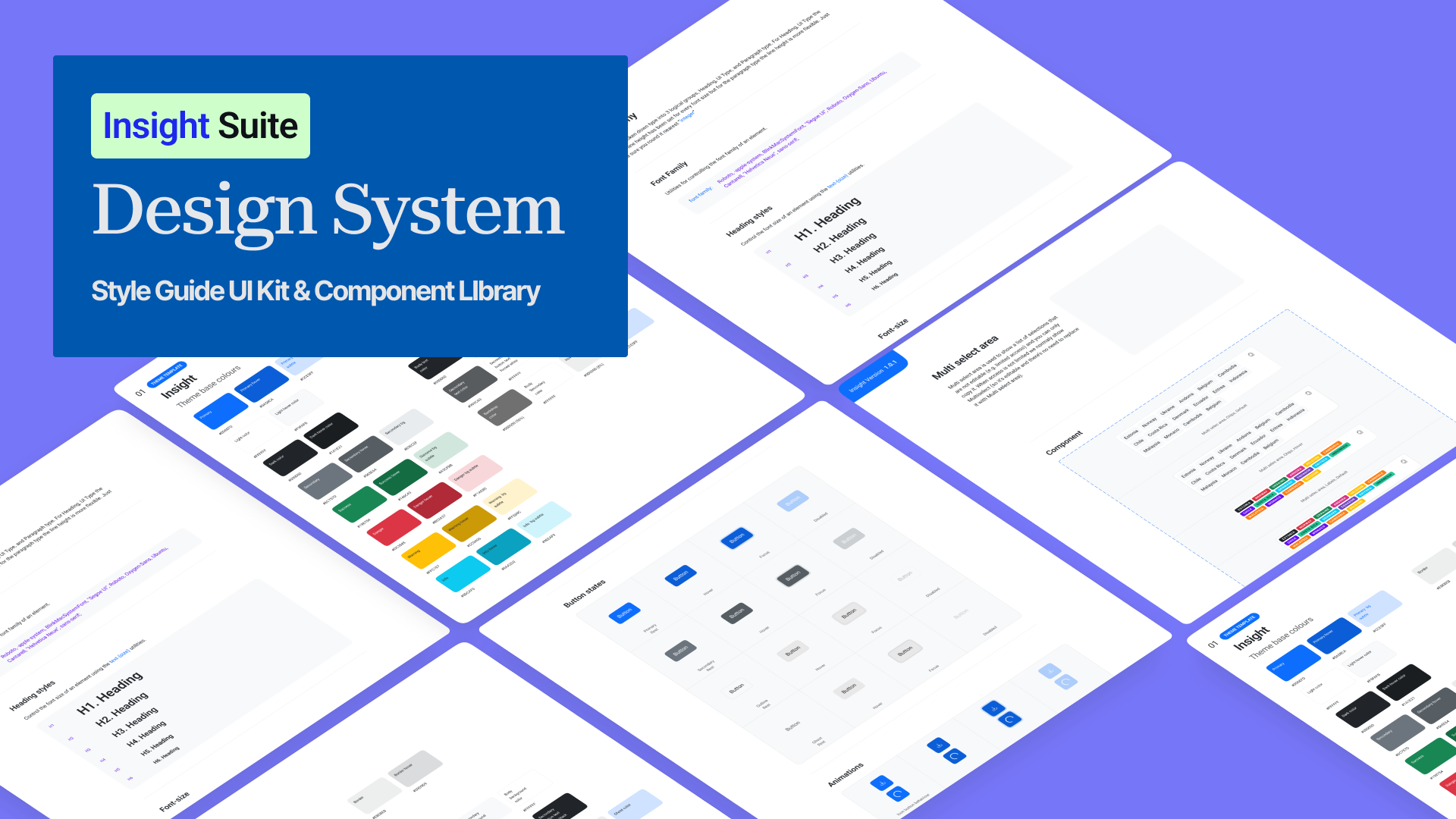
Insight Suite is a SaaS ecosystem of four interlinked products – Capture, Review, Planner, Connect. Each product had grown organically under different teams. Over time, this created:
The mission was to create a scalable design system that would unify brand identity, reduce design and dev effort, improve accessibility, and support long-term growth across all products.
evealed fragmented grids, inconsistent spacing, and at least 6 variations of primary buttons.
Developers complained about wasted time rebuilding components. PMs wanted faster delivery. Customer success teams flagged onboarding issues.
From analysts to operations managers. Many expressed frustration with having to “re-learn” each product.
tudied Material Design (scalability), Polaris (brand voice), Atlassian (SaaS complexity). These became the baseline references.
Users struggled when switching between products due to mismatched layouts, patterns, and interactions.
Developers repeatedly recreated similar buttons, tables, and forms instead of using shared components.
The products looked like separate entities rather than a unified suite, weakening brand identity.
Low-contrast text, missing alt tags, and inconsistent typography created barriers for inclusive use.
To better understand the challenges faced by different stakeholders, we mapped out key personas representing primary user groups. Each persona highlights their role, age, goals, frustrations, and needs in relation to the product experience. This allowed us to align design solutions with both business and user priorities.
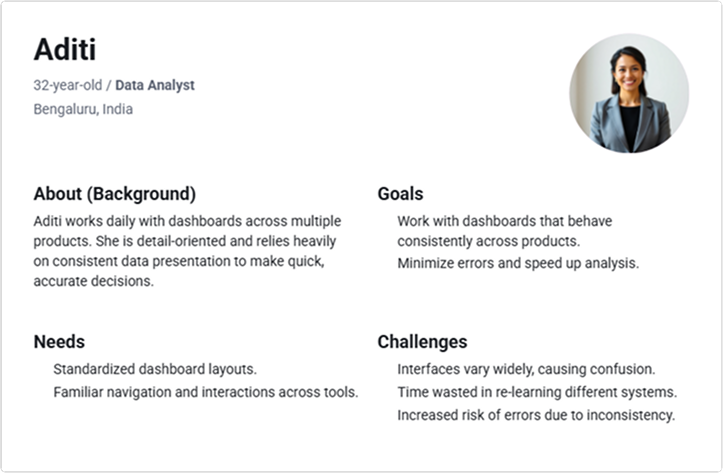
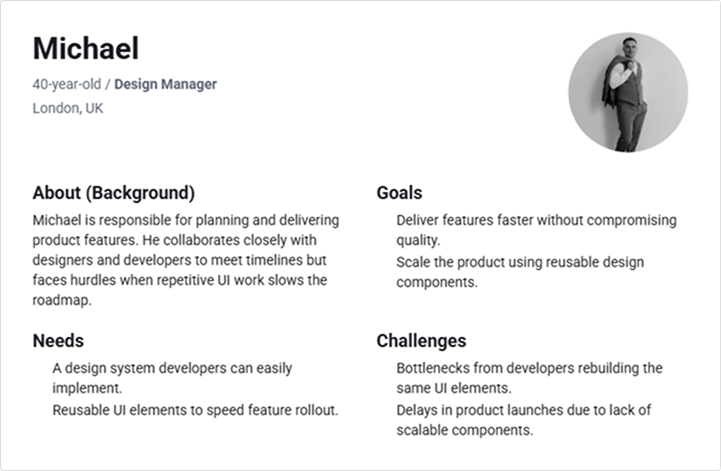
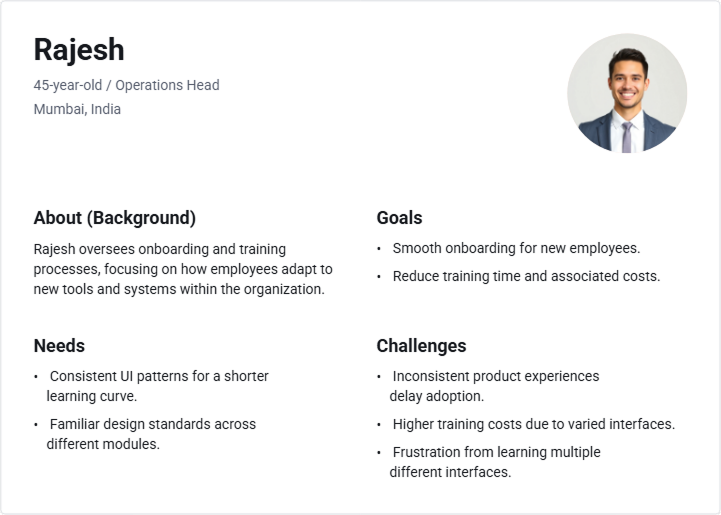
Insight:
Across all personas, a shared theme emerged — the desire for familiarity, consistency, and speed. Users expect a unified experience that minimizes re-learning, accelerates work, and supports scalability.
To uncover deeper behavioral patterns, we mapped Aditi’s experiences across what she feels, thinks, says, and does in her day-to-day work. This exercise highlighted the emotional and practical friction caused by inconsistent product flows, shaping critical insights for the design system strategy.
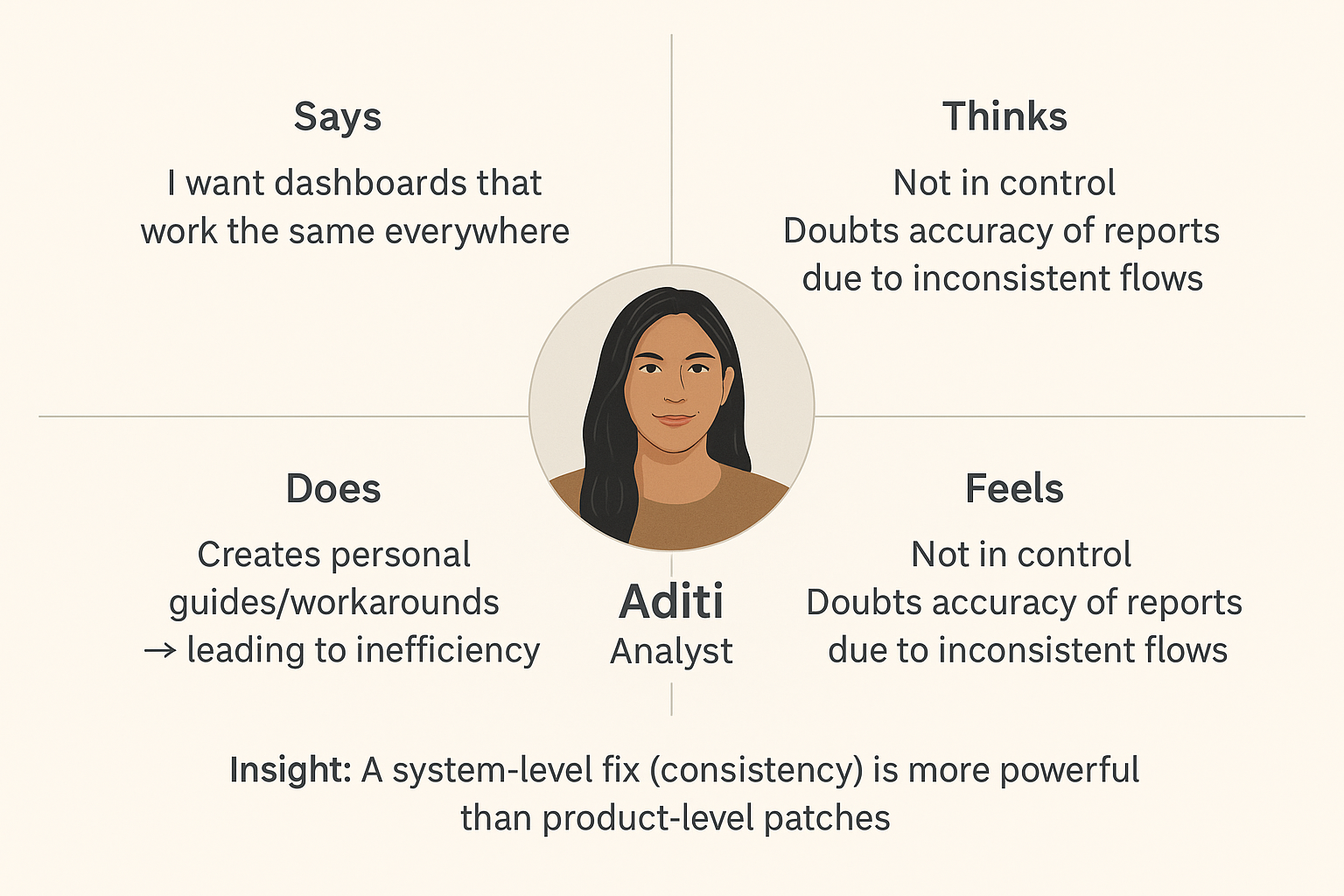
As part of the discovery phase, we conducted an in-depth competitor analysis to evaluate how other SaaS platforms approached design systems, dashboard consistency, and cross-product scalability. This exercise helped us benchmark best practices, identify gaps, and define opportunities for differentiation.
| Design System | Consistency | Scalability | Accessibility | Brand Alignment | Documentation |
|---|---|---|---|---|---|
| Atlassian | Reusable components | Strong component library; plugin ecosystem | Accessible contrast | Clear brand guidelines | Developer-friendly, detailed docs |
| Carbon (IBM) | Modular architecture | Enterprise-ready across complex products | Inclusive components | Tailored tone & global usage | Comprehensive governance model |
| Ant Design | Code portability | Suited for large enterprise apps | Navigation assist | Adaptive styling | Clear examples; lighter governance |
| Bolt | WYSIWYG builder | Lightweight & fast for startups | Keyboard navigation | Consistent look & feel | Moderate depth |
Insight:
Competitor analysis confirmed that the biggest differentiator isn’t just having a design system—it’s how well the system is maintained, governed, and adopted at scale. While visual consistency is foundational, the true value comes from enabling speed, reducing onboarding effort, and building user trust through a unified experience.
“Insight Suite users experience fragmented UX and inefficiencies due to the lack of a unified design system, leading to slower adoption, increased dev overhead, and inconsistent brand perception.”
Simplify navigation and streamline workflows to reduce task completion time by 30%.
Introduce smart automation and data pre-filling to minimize manual entry.
Implement a clean, consistent design system to improve visual appeal and trust.
Foster a more engaging and less frustrating user experience across all key touchpoints.
The Design Phase established scalable foundations and modular components to unify the Insight Suite. A consistent visual language (colors, typography, grid, icons) was defined, followed by a component library structured into atoms, molecules, organisms, and templates for reuse across products. Patterns and accessibility standards ensured usability, compliance, and familiarity, while documentation and governance created a single source of truth and sustainable adoption. Together, these steps transformed fragmented products into a cohesive, efficient, and inclusive ecosystem.
The primary and secondary color schemes, ensuring brand consistency and accessibility.
Defined font sizes, weights, and line heights for headings, body text, and UI elements.
A comprehensive library of vector icons for various functionalities and visual cues.
Guidelines for consistent layout, alignment, and spacing using an 8-point grid.
Primary, secondary, and ghost buttons with various states.
Form fields with states for active, error, and disabled.
Standard selection controls for forms and settings.
Small labels for categories, statuses, or alerts.
Component for primary and secondary navigation.
Modals & Dialogs
Overlays for important information or user input.
Controls for navigating through large sets of data.
Consistent global navigation and information footers.
Displaying complex data in a sortable, filterable format.
Pre-designed grid layouts for displaying analytics and key metrics.
Measuring the impact and success of our design system.
Increased uniformity across all product interfaces.
Reduced time spent on UI implementation and bug fixes.
Improved user feedback scores and task completion rates.
Significant improvements in WCAG compliance across the suite.
The Insight Suite Design System represents a monumental leap forward for the client. By fostering collaboration between design and engineering, we not only delivered a comprehensive toolkit but also instilled a culture of consistency and user-centricity. The measurable improvements in development efficiency, design consistency, and user satisfaction underscore the profound impact of a well-executed design system. We believe this foundation will continue to drive innovation and provide a superior experience for years to come.